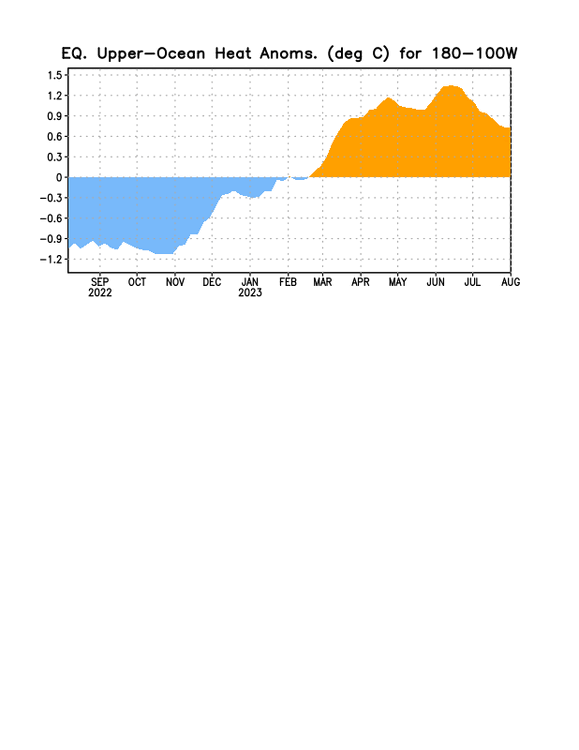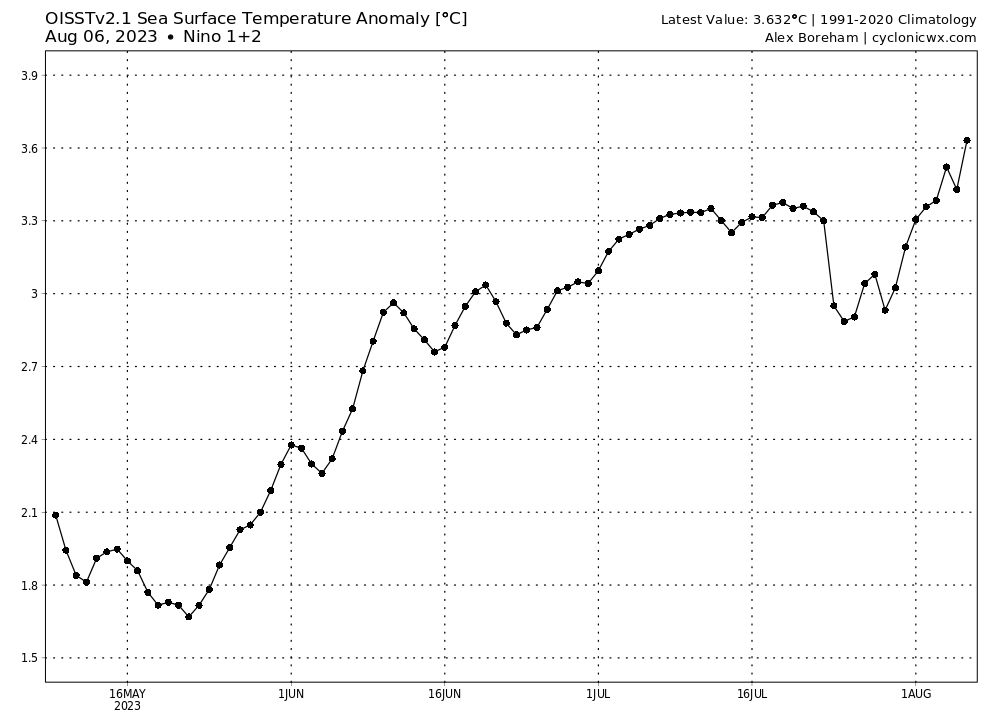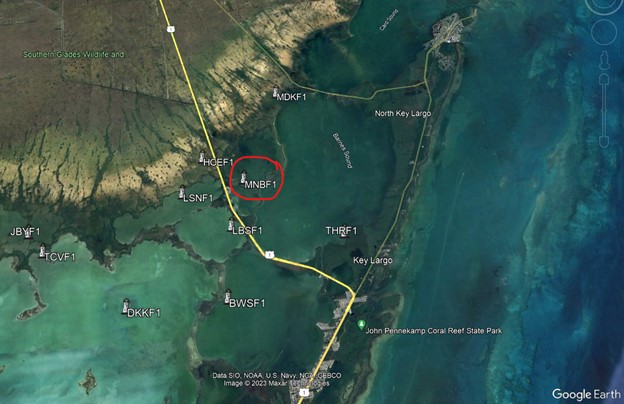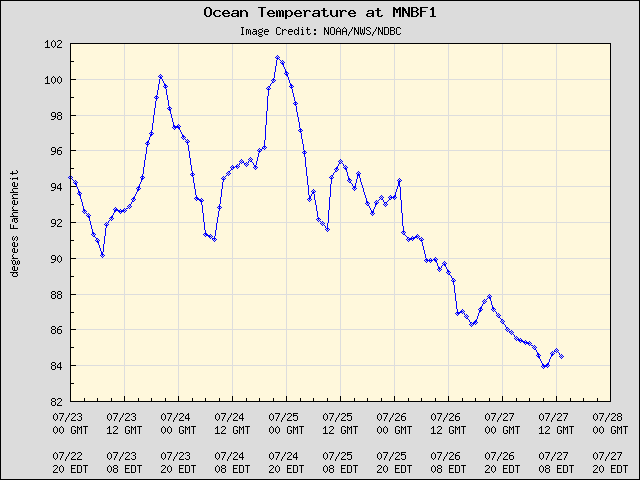
GaWx
Members-
Posts
17,051 -
Joined
Content Type
Profiles
Blogs
Forums
American Weather
Media Demo
Store
Gallery
Everything posted by GaWx
-
For the 40 GFS runs since July 31st, an unusually low (for this time of year) 10% of them (four runs) have had a hurricane in the Atlantic basin at any point during the 384 hours (all have been within the fantasy range) with the latest run being just the first Happy Hour run with one: -7/31 12Z: hit SC 8/16 -8/3 6Z: hit MX/TX border 8/16 -8/6 0Z: MDR 8/18-21 -8/9 18Z: just off SC 8/25
-
Looking ahead to the possible effects on US winters 2024-5 through 2028-9 from the January of 2022 Tonga volcano, the chance of a multiyear El Niño MAY be enhanced while the volcano still has influence, especially during 2025-9. Note how the DJF temperature anomaly pattern over the US in figure 7a comes rather close to a typical El Niño, including the cool SE and warm NW. Also, note especially figure 11d, which shows an El Ninolike Pacific SSTa pattern. Maybe this will counteract the chance for the Niña that at least one model run (August CANSIPS) was suggesting to be possible for 2024-5?? "The MiMA simulations confirm the robustness of the SWV-induced wave structure in the Pacific (Fig. 11ef), and they produce tropical surface temperature anomalies consistent with an El Nino-like pattern (Fig. 11a-d). This heating is produced by the zonally asymmetric distribution of SWV in the tropics, and consistent with the increased surface downward longwave flux over the tropical Pacific in WACCM (Fig. 9a). Thus, it is possible that the SWV forcing from the eruption would favor a positive phase of ENSO on a multi-year timescale, but further work is required to confirm this, in particular with a model including fully interactive ocean and cloud feedbacks." https://www.researchgate.net/publication/372889143_Long-term_surface_impact_of_Hunga_Tonga-Hunga_Ha'apai-like_stratospheric_water_vapor_injection
-
Looking ahead to the possible effects on SE winters 2024-5 through 2028-9 from the January of 2022 Tonga volcano, the chance of a multiyear El Niño MAY be enhanced while the volcano still has influence, especially during 2025-9. Note how the DJF temperature anomaly pattern over the US in figure 7a comes rather close to a typical El Niño, including the cool SE and mild NW. Also, note especially figure 11d, which shows an El Ninolike Pacific SSTa pattern: "The MiMA simulations confirm the robustness of the SWV-induced wave structure in the Pacific (Fig. 11ef), and they produce tropical surface temperature anomalies consistent with an El Nino-like pattern (Fig. 11a-d). This heating is produced by the zonally asymmetric distribution of SWV in the tropics, and consistent with the increased surface downward longwave flux over the tropical Pacific in WACCM (Fig. 9a). Thus, it is possible that the SWV forcing from the eruption would favor a positive phase of ENSO on a multi-year timescale, but further work is required to confirm this, in particular with a model including fully interactive ocean and cloud feedbacks." https://www.researchgate.net/publication/372889143_Long-term_surface_impact_of_Hunga_Tonga-Hunga_Ha'apai-like_stratospheric_water_vapor_injection
-
According to your first link, the probability for a multi-year El Niño may be enhanced while the volcano still has influence, especially during 2025-9. Note how the DJF temperature anomaly pattern over the US in figure 7a comes rather close to a typical El Niño (mild NW and cool SE). Also, note especially figure 11d, which shows an El Ninolike Pacific SSTa pattern: "The MiMA simulations confirm the robustness of the SWV-induced wave structure in the Pacific (Fig. 11ef), and they produce tropical surface temperature anomalies consistent with an El Nino-like pattern (Fig. 11a-d). This heating is produced by the zonally asymmetric distribution of SWV in the tropics, and consistent with the increased surface downward longwave flux over the tropical Pacific in WACCM (Fig. 9a). Thus, it is possible that the SWV forcing from the eruption would favor a positive phase of ENSO on a multi-year timescale, but further work is required to confirm this, in particular with a model including fully interactive ocean and cloud feedbacks." https://www.researchgate.net/publication/372889143_Long-term_surface_impact_of_Hunga_Tonga-Hunga_Ha'apai-like_stratospheric_water_vapor_injection
-
The SOI has averaged solidly negative for over three weeks. What's interesting about that is that this has been driven by very high Darwin SLP rather than low Tahiti SLP. As a matter of fact, the three week period ending this Friday August 11th is going to end up having the highest three week averaged Darwin SLP on record by a good margin (records go back to 1991-2 El Niño). Here are the top five highest 21 day averaged Darwin SLPs on record: 1) 7/22-8/11/2023: ~1016.00 mb (exact # TBD on Friday) 2) 7/26-8/15/1997: 1015.83 mb 3) 8/4-8/24/1993: 1015.73 mb (not El Niño) 4) 7/11-31/2015: 1015.65 mb 5) 8/2-8/22/1994: 1015.54 mb
-
We just got slammed from 7:50PM til 8:20PM with the most severe thunderstorm I've seen this summer. It was severe warned in advance. The wind gusts at the start of it had to be in the 50s mph and the rain rates were torrential. Preliminary amounts were 1.5-2" within just 30 minutes. My street is completely flooded. Lights were out once for a minute or so with some CTG strikes. On the backside the lightning flashes are at ~35/minute! Everything about this storm was classic for a memorable summer thunderstorm. I'm glad I was inside! What Hunter AAF experienced is similar to what I saw: 0755 PM TSTM WND GST HUNTER ARMY AIRFIELD 32.01N 81.13W 08/08/2023 M53 MPH CHATHAM GA ASOS HUNTER ARMY AIRFIELD GUSTED TO 53 MPH.
-
At Atlanta and in much of the SE, both 2009-10 and 2010-1 had cold and wintry Dec-Jan making for two good winters in a row, overall. But Feb had major differences between the cold/wintry 2010 and the mild 2011 although even it had snow at Atlanta. Strictly in terms of snowfall, Atlanta had more snow in each of 2009-10 (5.3") and 2010-11 (7.1") than any others between 1983-4 and the present. I will note however that although 1987-8 had less (4.2"), that was all sleet meaning the water equivalent of ~8-9" of snow. Regardless of Feb, which is often mild during La Niña in the SE anyway, 2010-1 was one of the, if not the, coldest/wintriest moderate+ La Niñas in decades at Atlanta and much of the SE. That looks like it was Modoki. 1988-9 was another Modoki and was a bit warmer than normal overall, but Feb of 1989 was snowy in much of the SE, especially NC, and produced one deep SE snow (1" even way down here).
-
Do you happen to have the link to that met's Twitter video? TIA
-
Regarding 2024-5, Modoki La Niña?
-
-
In addition to the TAO buoy 5 day averaged images, I follow all 3 daily index changes. However regarding absolutes, the closest of the 3 to ERSST, which ONI is based on, is OISST as CRW has tended to be too warm and CDAS has been too cool. ERSST has recently been slightly cooler than OISST but closer to it than to CDAS. Also, the weekly SST updates use OISST.
-
Indeed it did. Also, Nino 1+2 warmed even more than to my +3.3 guess to +3.4. Despite OISST catching that 3.4 cooling last week, things appear to now be reversing in a hurry in 3.4. The TAO buoys update today is another significantly warmer day similar to the last few. Also, today is significantly warmer in 3.4 than yesterday on OISST, the warm biased CRW, and the cool biased CDAS. The CDAS warmed a whopping 0.109 since yesterday, which is the strongest CDAS warming in one day in 3.4 since at least March 1st! Also, it exceeded +1.0 for the first time this El Niño. This along with the recent period of stronger -SOI tells me that we may finally have a period of sustained significant warming upcoming for 3.4, which would be the first time in two months.
-
Followup: 12Z GFS: Caribbean shear picks up Aug 12 and is strong the rest of the run. The 12Z GEFS also increases shear there Aug 12 and it is strong through at least Aug 17th (that's as far as run is out so far). Edit: 12Z GEFS strong Caribbean shear continues for about a week but then decreases to near normal Aug 20-23 while the strong shear zone shifts just to the north of the Greater Antilles. Meanwhile, E US 500 mb ridging takes over on this GEFS run 8/19-8/23, which if it were to verify would potentially open the door to the E US for anything that might be in the W Atlantic then. I hope that would be shortlived if it happens. The run has 4 hurricanes out of 31 members off the SE coast late fwiw.
-
I stand corrected. I didn't realize that that much shear was being modeled on the recent GFS/Euro runs 8/15-16. Yes, I see the strong westerly shear in the Caribbean that you posted. I need to reassess the model consensus for Caribbean shear from midmonth on.
-
Sometimes the NHC is too conservative. Example: Don. It had no chance for development going out 7 days until it was within 5 days of being named.
-
1. But the typical El Niño induced above normal Caribbean sheer is still nowhere to be found on the model consensus, including fwiw the CFS into early September. It actually is the opposite! 2. The 12Z EPS looks rather active to me after August 15th fwiw. 3. I'm not entirely dismissing the chance that the AEW now in the mid-MDR that ldub mentioned in reference to the satellite pic becomes a TC within a few days.
-
I'm guessing that Nino 3.4 will drop to +1.1 in tomorrow's report from +1.2 last week.
-
The lower right is what the CFS is developing into a TS that hits the NE Caribbean late this week. Bears watching.
-
Should the CFS due to its inferiority be ignored? For at least two runs, it has shown a TS moving into the NE Caribbean late week while no other operational shows any TC.
-
Nino 1+2 SSTa is today up to +3.632C per OISST after an 8 day rise of 0.7C. Per this graph, tomorrow's weekly report (for the prior week) should rise from the prior +3.0C to ~+3.3C:
-
Report: Another Year of Record Heat for the Oceans
GaWx replied to donsutherland1's topic in Climate Change
This is a much better way to state the heat of the water in/near the Keys. -
Report: Another Year of Record Heat for the Oceans
GaWx replied to donsutherland1's topic in Climate Change
This article includes the following: "Last month, temperatures of 38.3 C—as hot as a jacuzzi—were recorded off the Florida coast, which could be a world-record high for a point measurement if the figure is confirmed." The article has a number of valid points/stats illustrating the amazing record warmth of the oceans. But it could have been better if the writers had done their homework regarding what I quoted. They imo should have either left the quoted portion out or stated the reasons that the 38.3C at Manatee Bay buoy isn't a valid ocean temperature as regards world records as Dr. Masters said (so shallow you can see sunlight absorbing dark bottom (see below), 10F range that day/up to 3.5F hourly ranges, affected by tides, near shoreline/sheltered, water cooled to 84F 60 hours later (see below)). Furthermore, the 38.3C/101.1F isn't even a record for that location as it hit 102F on 8/15/2017. So, there was no way the 101.1F could be a world record of any kind: If they had reported on that same day's 92.3F at the Key West buoy, which is itself ridiculously hot and probably near records for it, that would have been legitimate. But due to sloppy journalism, they invite AGW skeptics to point out the Manatee Bay buoy's 101.1F as deceptive, which it is, and thus result in them discrediting the entire article even though the rest of the article looks good to me. Manatee Bay buoy: Sheltered near shore shallow with dark bottom: Fell from 101.1F 6PM 7/24/23 to 83.9F 5AM 7/27/23: -
RE: Euro August run -Nino 3 for NDJ has risen from ~+2.45 last month to ~+2.75 this run -Nino 4 for NDJ has risen from ~+1.6 last month to ~+1.8 this month - For DJF on new run, here are estimates: 1+2: +2.4 3: +2.65 3.4: +2.3 4: +1.8 My guess is that most or all of these will verify a bit cooler due to warm bias. Regardless, chances of a super ONI peak have increased a little based on increases in Euro (now ~+2.37) and CFS (now ~+2.12) along with BoM not backing down from its upper +2s prog. But with 3.4 still rising only sluggishly recently (still ~+1.1 OISST and ERSST likely even a little cooler) and considering Euro warm bias along with OHC cooling to only +0.75, I'm continuing predicting only a strong ERSST based ONI peak as of now. I'm ~+1.8.
-
Indeed: 1. ONI peak has risen ~0.2 from +2.17 NDJ prior run to ~+2.37 NDJ this run 2. 1+2 has risen from mid +2s to high +2s Nov-Dec.
-
Based on the 12Z model consensus, my biggest concern for at least the next two weeks for the CONUS is for the period August 13-17, when the Bermuda high/WAR looks strongest, which may make it hard for a safe recurve. During that period, the model/ensemble consensus is suggesting that what's now coming off Africa will merge with energy/moisture now near 30-35W and likely move quite far west in the MDR at a very much up in the air strength (could end up being just a vigorous tropical wave). Bears watching.







